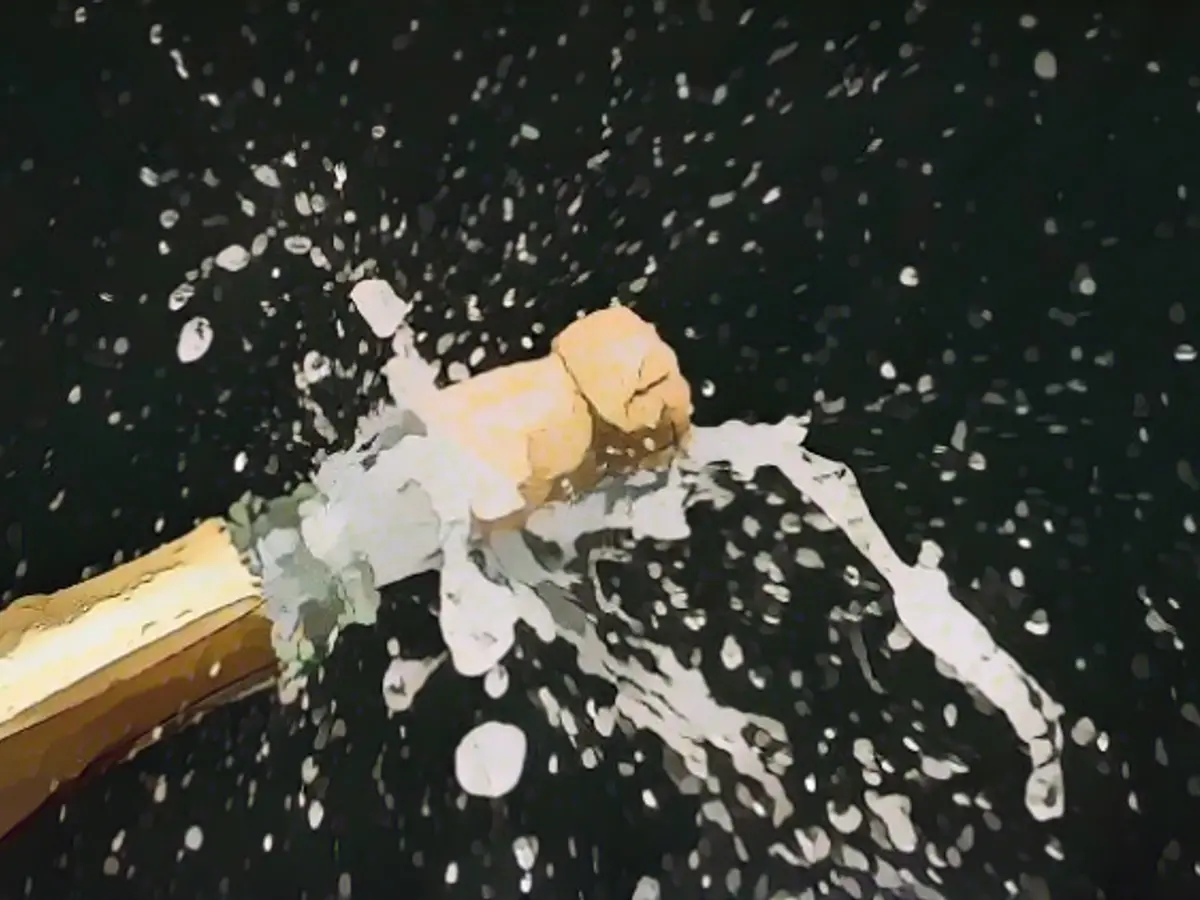Secret of the champagne cork pop revealed for the first time
Complex supersonic phenomena occur when a champagne bottle is uncorked. This was discovered by researchers from the Institute of Fluid Mechanics and Heat Transfer at TU Wien in cooperation with the private Austrian Competence Center for Tribology (AC2T). With the help of complex computer simulations, the experts discovered for the first time that a so-called supersonic shock wave is created when a cork is popped, the researchers write in a publication of their study results.
"The champagne cork itself flies away at a comparatively low speed, reaching perhaps 20 meters per second (72 km/h - editor's note)," says Lukas Wagner, first author of the study. However, the gas that flows out of the bottle at the same time is much faster. According to Wagner, it even overtakes the cork and reaches speeds of up to 400 meters per second (1440 km/h). This means it reaches supersonic speeds.
Variables such as pressure and temperature in a gas normally change evenly. Points close to each other therefore also have the same air pressure. When the bottle is opened, these values suddenly diverge - a shock wave is created. "The pressure or velocity in front of the shock wave front has a completely different value than just behind it," explain the experts. Similar phenomena are known from supersonic airplanes or rockets, where the exhaust jet escapes from the engines at high speed.
Colder than at the North Pole
In addition to the pressure, the temperature in the gas also changes abruptly. "When gas expands, it becomes cooler, as we know from spray cans," explains Wagner. "This effect is very pronounced in the champagne bottle: the gas can cool down to 130 degrees Celsius at certain points."
It can even happen that tiny dry ice crystals are formed from the CO2 that makes the sparkling wine bubble. Depending on the temperature of the sparkling wine, dry ice crystals of different sizes are created, which then scatter light in different ways. "This creates differently colored smoke. In principle, you can tell the temperature of the sparkling wine by the color."
And how does the pop come about?
Several effects are responsible for the familiar popping sound: As soon as the cork leaves the bottle, it expands, creating a pressure wave. The shock wave of the gas jet is also audible. Both together produce the characteristic cork pop.
The calculation methods developed by the team of experts are not only applicable to the festive popping of corks, but can also be transferred to other areas. In many technically important situations, we are dealing with very solid flow bodies that interact strongly with a much faster gas flow, such as when a gun is fired, summarizes the research team according to the university's press release.
Read also:
- This will change in December
- Attacks on ships in the Red Sea: shipping companies avoid important trade route
- Houthi rebels want to launch further attacks despite international coalition
- USA forms military coalition against Houthi attacks on ships in the Red Sea
In the realm of physics education, the revelation of the champagne cork pop mechanism provides an interesting case study for students. During New Year's Eve celebrations, the iconic cork pop sound is a notable event.
The findings from this research could also have potential applications in various engineering fields, aiding in the understanding and resolution of challenges involving highly pressurized gas and solid interactions, such as in firearm operation, as mentioned in the press release.
Source: www.ntv.de







